Hawaii has a number of state holidays you won’t find on the mainland. What’s more, Hawaii is the only state in the U.S.A. that has holidays dedicated to royal figures—King Kamehameha and Prince Kuhio. (Given the nature of our origin story, the idea of monarchy and the United States go together like oil and water.) The different periods of Hawaii’s history are endlessly fascinating to me, and the upcoming holiday gives good reason to dig into the celebration of a historical figure that many have never heard of. Prince Jonah Kuhio Kalaniana‘ole made such an impression on the state of Hawaii that he was forever memorialized with his own holiday, Prince Kuhio Day. It is celebrated each year on March 26th, his birthday. Here’s a little backstory on who he was and why we celebrate his life and legacy.
From the Kamehameha Dynasty to the Kalakaua Dynasty
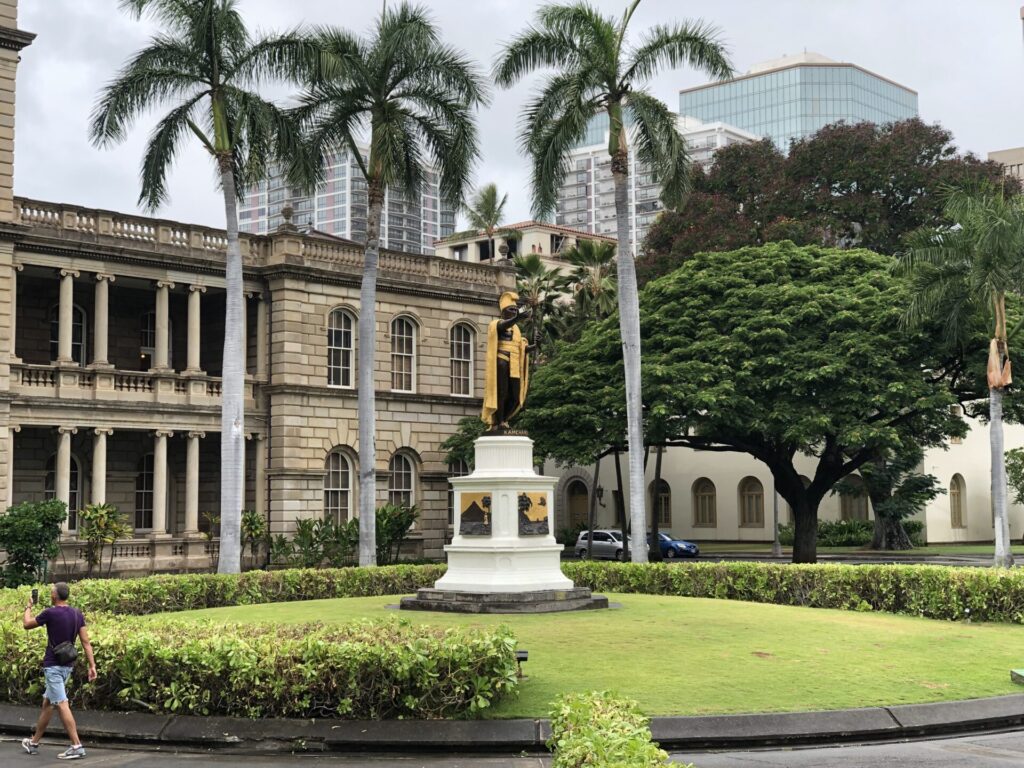 Hawaiian history isn’t particularly well known outside the islands, but the name Kamehameha tends to at least ring a few bells. (Fans of the anime Dragon Ball always perk up when they hear that name.) Kamehameha was the first ruler to unite (or, rather, conquer) the Hawaiian Islands. In the 1790s, his large company of troops, armed with some western armaments and advisers, swept from the Big Island across to Maui, Moloka‘i, Lana‘i and O‘ahu. After some delays in taking Kaua‘i, the last of the holdouts, its king finally acquiesced to the inevitable and Kamehameha became the first king of all the islands. His descendants became the the royalty that ruled Hawaii until 1872, with the death of Kamehamea V. (A sixth king, Lunalilo, the grandnephew of Kamehameha I, was elected to be king in 1873 but died of tuberculosis just over a year after ascending the throne.)
Hawaiian history isn’t particularly well known outside the islands, but the name Kamehameha tends to at least ring a few bells. (Fans of the anime Dragon Ball always perk up when they hear that name.) Kamehameha was the first ruler to unite (or, rather, conquer) the Hawaiian Islands. In the 1790s, his large company of troops, armed with some western armaments and advisers, swept from the Big Island across to Maui, Moloka‘i, Lana‘i and O‘ahu. After some delays in taking Kaua‘i, the last of the holdouts, its king finally acquiesced to the inevitable and Kamehameha became the first king of all the islands. His descendants became the the royalty that ruled Hawaii until 1872, with the death of Kamehamea V. (A sixth king, Lunalilo, the grandnephew of Kamehameha I, was elected to be king in 1873 but died of tuberculosis just over a year after ascending the throne.)
With no designated heirs from Lunalilo, the kingdom looked to other members of the nobility to maintain the monarchy. It was the Kalakaua family, whose ancestors had been advisors to Kamehameha I, that was elected to be the new monarchy. In 1874, David Kalakaua became the next (and last) king of the Kingdom of Hawai‘i until his death in 1891. (King Kalakaua became known as the Merrie Monarch for his fun-loving personality and did many things to contribute to perpetuate the Hawaiian culture that can be seen to this day—a future blog will explore more of his story.)
So where does Prince Kuhio fit in to this story? Jonah Kuhio Kalaniana‘ole was the heir to the last king of the island of Kaua‘i. (His family history is pretty complex—there’s years worth of soap opera material within all branches of the Hawaiian monarchy.) He became an orphan at young age; his father died when he was only seven, and his mother passed away when he was 13. His aunt, Kapi‘olani, the wife of newly crowned King David Kalakaua, adopted him and Kuhio’s royal pedigree was further solidified.
Prince Jonah Kuhio benefited from his royal ties by getting a world-class education. The 1870s through1890s saw a huge push by the monarchy for the Kingdom of Hawai‘i to be recognized on the world stage. Education of the people of Hawaii was a cornerstone of this movement, and those connected to the nobility were given even greater opportunity to broaden their horizons. Kuhio studied at the best schools in Hawaii, including both the exclusive schools now known as ‘Iolani and Punahou. He and his brothers went on to attend school in California (where, in 1885, they became the first surfers in California), and later to prestigious schools in England (where they also became the first surfers in England in 1890).
The Overthrow of the Kingdom
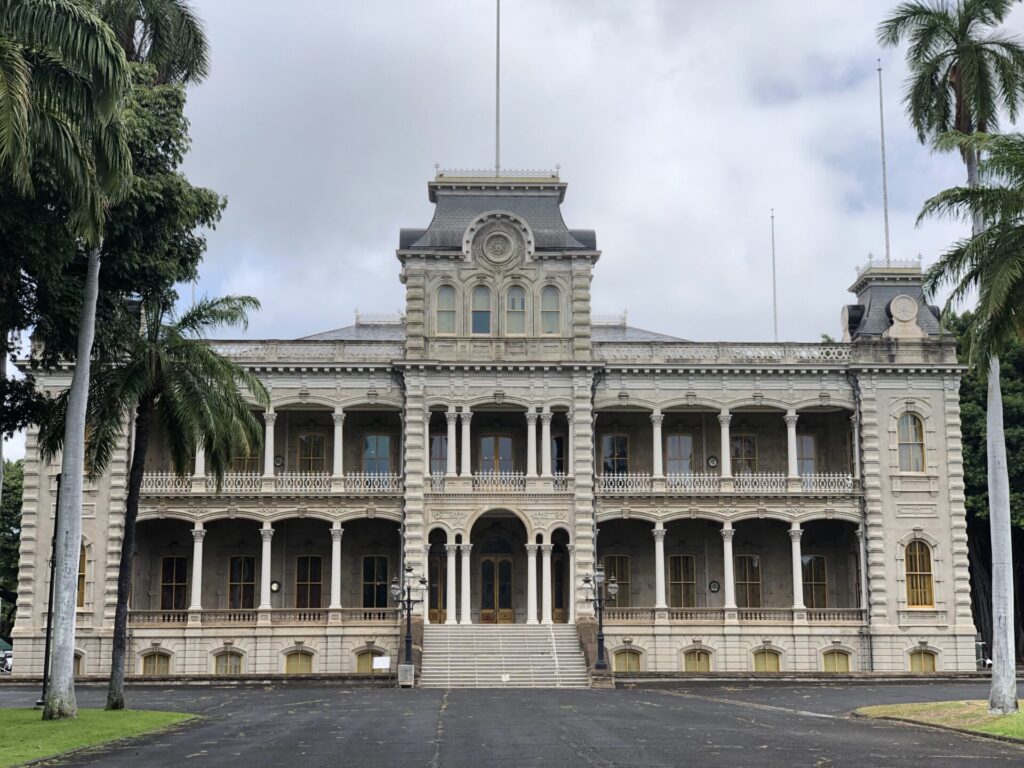 This is where the story takes a tragic turn. Since this is the story of Prince Kuhio, I won’t go deep into the details of the overthrow of the Kingdom of Hawai‘i. The abridged version of the incident comes down to American businessmen, unhappy with the way the Hawaiian monarchy operated, rebelled against Kalakaua. In 1887, under threat of violence, the businessmen forced the king to sign what is known as the Bayonet Constitution, stripping the monarchy of much of its power. Kalakaua later died in 1891, and his younger sister, Lili‘uokalani, became the last queen of the Kingdom of Hawai‘i. Despite efforts by Queen Lili‘uokalani and her subjects to write a new constitution and reinstate power to the monarchy, in 1893 the those same businessmen (and others) imprisoned the queen and ended the Kingdom of Hawai‘i. The Republic of Hawaii was then established with Sanford Dole (cousin of the guy that started the fruit company) as president in 1894. The Republic of Hawaii was meant to be short-lived, as all involved in its creation did so with the intent of getting the U.S. government to annex Hawaii. Hawaii was eventually annexed in 1898, officially becoming the Territory of Hawaii in the year 1900.
This is where the story takes a tragic turn. Since this is the story of Prince Kuhio, I won’t go deep into the details of the overthrow of the Kingdom of Hawai‘i. The abridged version of the incident comes down to American businessmen, unhappy with the way the Hawaiian monarchy operated, rebelled against Kalakaua. In 1887, under threat of violence, the businessmen forced the king to sign what is known as the Bayonet Constitution, stripping the monarchy of much of its power. Kalakaua later died in 1891, and his younger sister, Lili‘uokalani, became the last queen of the Kingdom of Hawai‘i. Despite efforts by Queen Lili‘uokalani and her subjects to write a new constitution and reinstate power to the monarchy, in 1893 the those same businessmen (and others) imprisoned the queen and ended the Kingdom of Hawai‘i. The Republic of Hawaii was then established with Sanford Dole (cousin of the guy that started the fruit company) as president in 1894. The Republic of Hawaii was meant to be short-lived, as all involved in its creation did so with the intent of getting the U.S. government to annex Hawaii. Hawaii was eventually annexed in 1898, officially becoming the Territory of Hawaii in the year 1900.
During the tumultuous events in Hawaii, Prince Kuhio was finishing his education abroad. He went on to work for the U.S. Department of the Interior for a few years, but after the 1893 overthrow of the Kingdom, he turned his attention back to the islands. He was a part of the brief rebellion against the Republic of Hawaii in 1895, but was eventually captured and spent a year in prison for his efforts. Besides the loss of the kingdom, Kuhio was hit with a double whammy of tragedies in 1899 with the death of his aunt, the former Queen Kapi‘olani, and his cousin, Ka‘iulani (who would have been the next in line for the throne after Lili‘uokalani). Kuhio and his wife went into exile over the next couple years, traveling across the United States, Europe and Africa.
Kuhio Becomes a Statesman
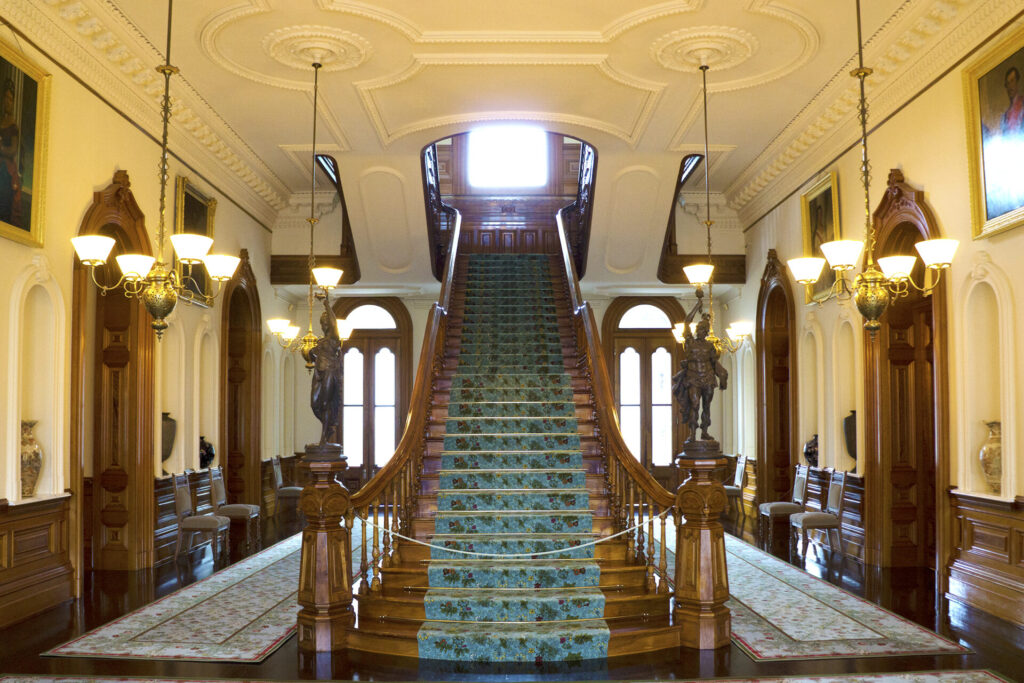 After spending time abroad with his wife, Jonah Kuhio returned to Hawaii. As one of the few remaining members of the nobility, he felt it was his responsibility to the people of Hawai‘i to continue to the fight for Hawaiian independence and the rights of native Hawaiians. He knew the best way to do this was to work within the system by becoming a delegate for the Territory of Hawaii. In 1902, Kuhio was elected to represent Hawaii in Washington D.C. There he championed the rights of Hawaiians, getting legislation passed that allowed for elections to positions in local government (rather than just being appointed), ensuring women in Hawaii also had the right to vote when women’s suffrage was passed in 1920, secured funding for Hawaii’s infrastructure, as well as the Hawaii Homes Commission which has helped generations of native Hawaiians have stable places to live. Though it wouldn’t be passed until nearly 40 years later, he also introduced the first Hawaii Statehood Act in 1919. In addition to his work as a legislator, Kuhio tirelessly promoted several cultural and civic endeavors throughout his life and career, including the observance of the holiday Kamehameha Day.
After spending time abroad with his wife, Jonah Kuhio returned to Hawaii. As one of the few remaining members of the nobility, he felt it was his responsibility to the people of Hawai‘i to continue to the fight for Hawaiian independence and the rights of native Hawaiians. He knew the best way to do this was to work within the system by becoming a delegate for the Territory of Hawaii. In 1902, Kuhio was elected to represent Hawaii in Washington D.C. There he championed the rights of Hawaiians, getting legislation passed that allowed for elections to positions in local government (rather than just being appointed), ensuring women in Hawaii also had the right to vote when women’s suffrage was passed in 1920, secured funding for Hawaii’s infrastructure, as well as the Hawaii Homes Commission which has helped generations of native Hawaiians have stable places to live. Though it wouldn’t be passed until nearly 40 years later, he also introduced the first Hawaii Statehood Act in 1919. In addition to his work as a legislator, Kuhio tirelessly promoted several cultural and civic endeavors throughout his life and career, including the observance of the holiday Kamehameha Day.
Kuhio served as a delegate until 1921, leaving a legacy of public service and advocacy that few politicians anywhere in the country rival. Though his term wasn’t set to expire until 1923, Kuhio returned to Hawaii in 1921. His health had been getting worse for years but his sense of duty kept him from slowing down. In January of 1922, Jonah Kuhio Kalaniana‘ole passed away with his wife by his side.
Kuhio’s Legacy
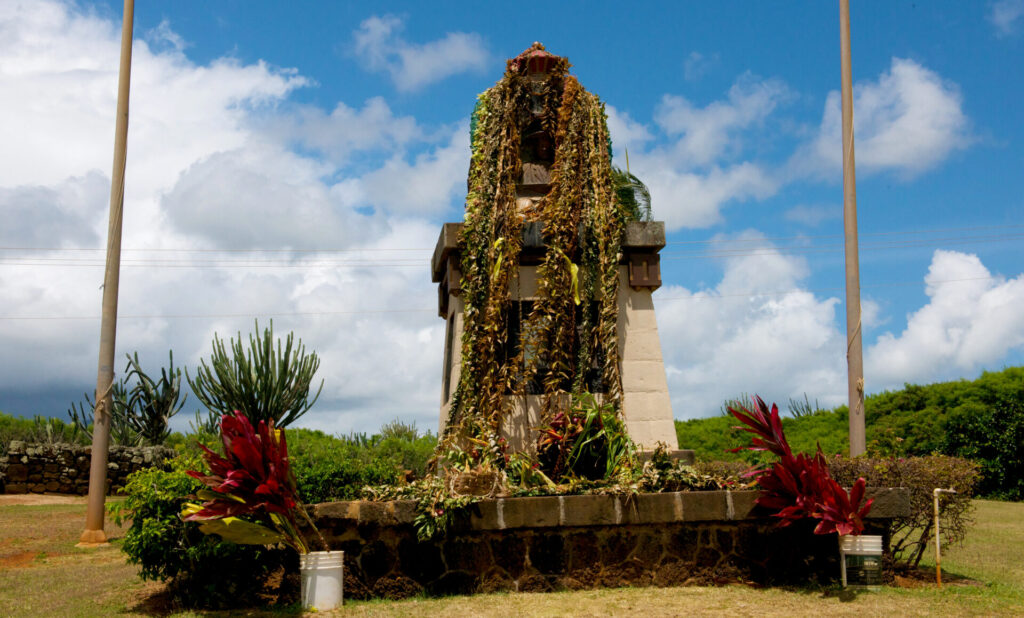 Today, we Prince Kuhio is probably best know in the many places he’s been memorialized. Roads, buildings, malls, hotels, beaches and even surf breaks have been named in his honor. On Kaua‘i, near his birthplace, is the his namesake park where people leave lei and other flower tributes to the local hero. But the memorial most visible to those that visit Hawaii can be found in Waikiki on Kalakaua Avenue. There you can find a bronze statue of Prince Kuhio. If you pass by while exploring Waikiki, take a moment to appreciate this little known hero of Hawaii’s past. You can learn more about the life, death and legacy of Prince Jonah Kuhio Kalaniana‘ole in this article from one of Hawaii’s best news sources.
Today, we Prince Kuhio is probably best know in the many places he’s been memorialized. Roads, buildings, malls, hotels, beaches and even surf breaks have been named in his honor. On Kaua‘i, near his birthplace, is the his namesake park where people leave lei and other flower tributes to the local hero. But the memorial most visible to those that visit Hawaii can be found in Waikiki on Kalakaua Avenue. There you can find a bronze statue of Prince Kuhio. If you pass by while exploring Waikiki, take a moment to appreciate this little known hero of Hawaii’s past. You can learn more about the life, death and legacy of Prince Jonah Kuhio Kalaniana‘ole in this article from one of Hawaii’s best news sources.
Lu‘au
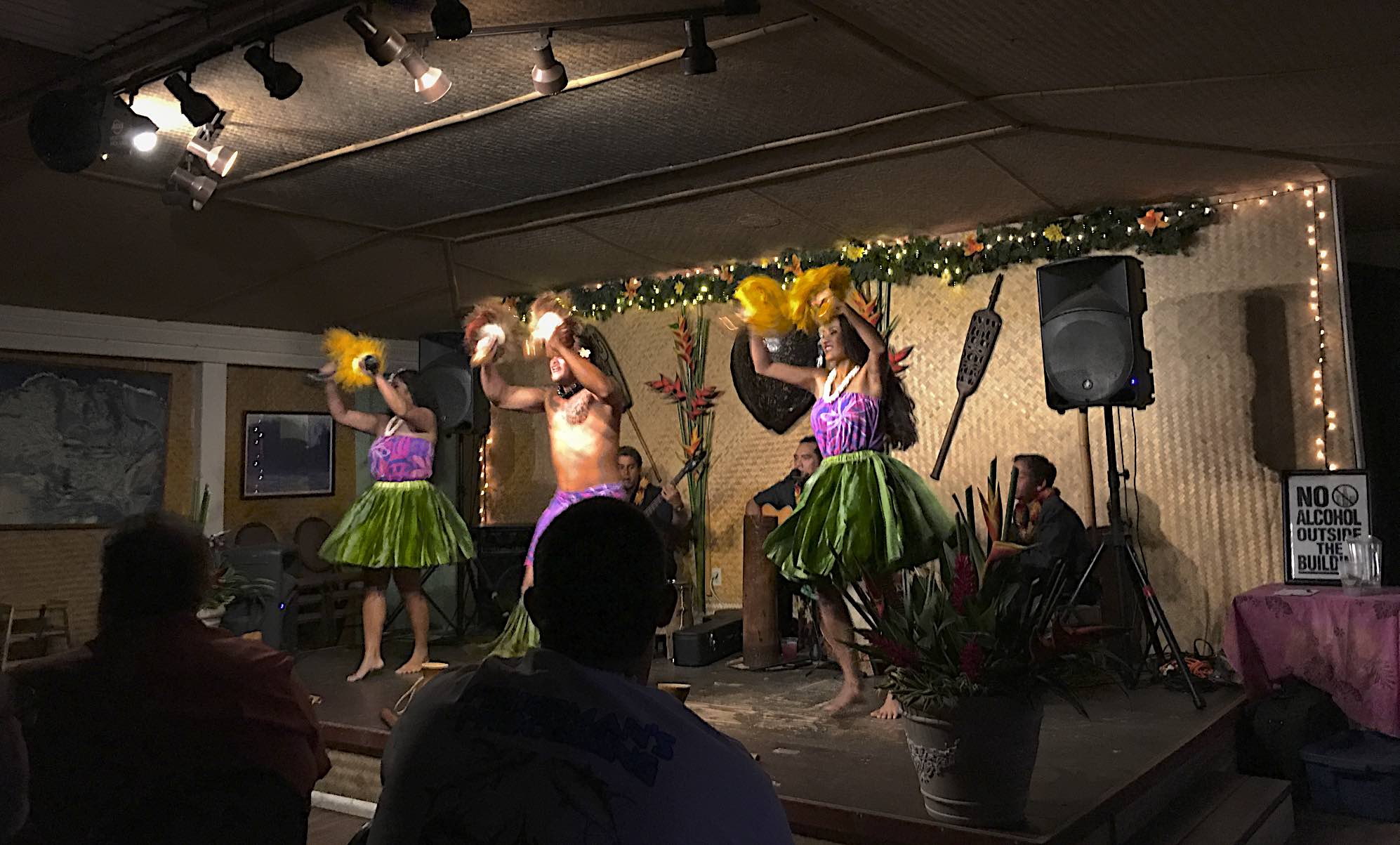
Tahiti Nui Lu‘au
Tahiti Nui Lu‘au offers a cozy setting, making you feel like part of a talented family. Instead of hundreds, the dining hall next to Tahiti Nui bar accommodates around 60 guests, creating a tight-knit atmosphere. Enjoy well-crafted mai tais and a show featuring traditional hula and Samoan fire dance.
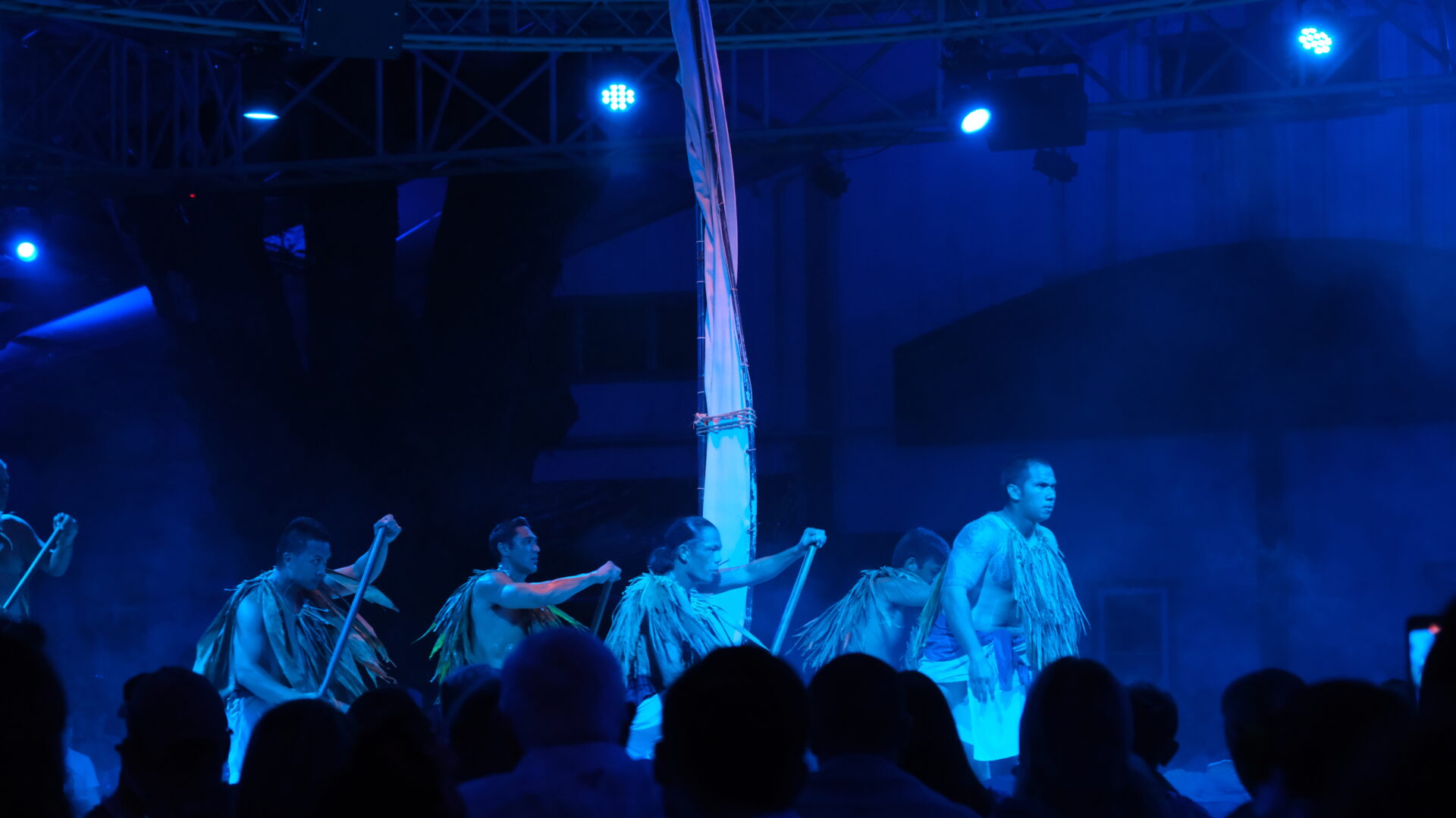
Lu‘au Kalamaku
Lu‘au Kalamaku at Kilohana is one of the largest lu‘aus in Hawaii and offers a captivating theatrical production of the Polynesian migration to Hawai‘i. Guests can explore the grounds, visit vendor booths, and enjoy a drink while waiting. Seating is assigned with good views from nearly every table. The show features energetic performances, including an exciting fire knife dance.
Find out more Hawaiian history, legends and stories in our guides. We show you the best of what Hawaii has to offer, while helping you avoid the worst. Our believable guides bring unbelievable vacations.




0 Comments